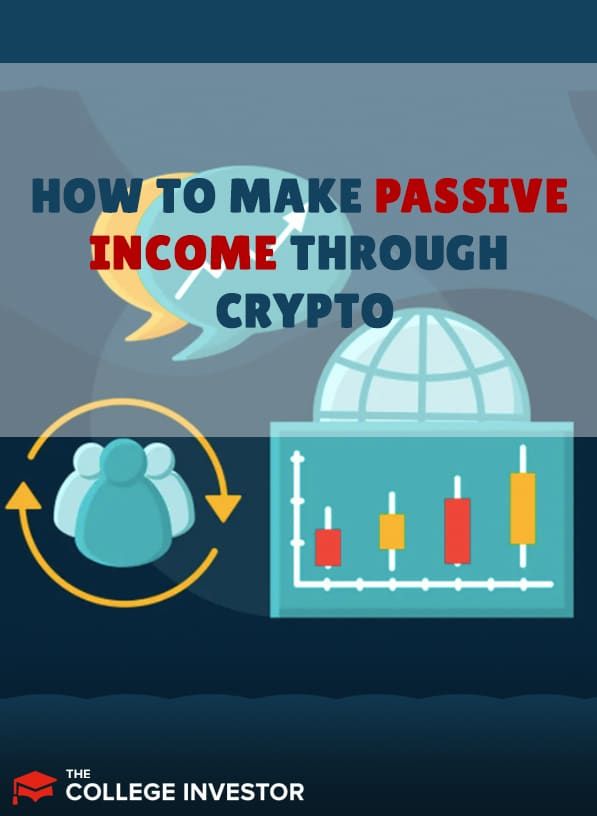
Digital currencies like Bitcoin, Ethereum, Dogecoin are hot investments right now. While the technology behind these tokens is more than a decade old, the skyrocketing trading prices is a more recent phenomenon.
But the value of price surges is paired with massive volatility. And unlike many stocks, crypto tokens don't pay dividends that can provide a stable income during periods when share prices are down. However, investors who want to make passive income through crypto may be able to do so through interest-bearing cryptocurrency accounts.
Let’s talk about what it means to earn interest on cryptocurrency holdings, how it can help boost long-term holdings, and what depositors need to consider when picking an interest-earning crypto account.
If you just want to get started, check out Uphold here >>
How Can You Make Crypto Passive Income?
Historically, cryptocurrency investors have made money by trading coins. Taking advantage of price swings allowed the most successful traders to earn high returns from their trading activities. Of course, this type of trading is highly active.
Other “digital workers” earned tokens through mining activities (which are required to keep the blockchain working). But again this requires a lot of hands-on work.
Today, there are a few important ways that crypto investors can earn income in a more passive way. These methods include:
Why Interest Is An Important Part Of Passive Income For Crypto Investors
Today, Centralized Finance (CeFi) institutions are making it possible to earn passive income through crypto investments. They do this by paying investors interest on deposits held at the institution.
Earning interest on cryptocurrency holdings mirrors the process of earning interest on fiat currencies. When you put money (US Dollars) into a high-yield savings account at a bank, you may expect to earn around 1% in yield each year. The bank puts your money to work by lending it to qualified borrowers. You make a small amount of interest on the money you earn. And the bank earns money on the spread.
CeFi institutions are the cryptocurrency equivalents of banks. They don’t have the same guarantees as banks (aka, you could lose your crypto tokens due to theft). But they operate in a similar capacity. A CeFi institution like Uphold accepts cryptocurrency deposits. It lends those tokens to creditworthy parties. Then it pays depositors an interest rate. Typically the interest is paid in the same token as was lent out. But some companies offer depositors the ability to choose their interest token.
Right now, interest rates on cryptocurrency are astronomical compared with interest rates on fiat currencies. But many cryptocurrency investors are still reluctant to deposit their money into CeFi institutions. Even though many of these companies have asset protection insurance policies, crypto “banking” is still a new concept. And the risk feels high.
But CeFi institutions typically compensate investors well for taking on that risk. For example, Uphold right now is offering up to 25% APY on your deposits, depending on what token you invest in. That’s a solid return for simply keeping your money in an account.
They offer different payouts for different crypto currencies. Check out Uphold here and see what you can earn with BTC, ETH, and more >>
Why Is It So Important To Earn Interest On Crypto Holdings?
Over the past several years, many cryptocurrency investors have seen large run-ups in the value of their tokens. Back in 2011, Bitcoin was worth less than a dollar. Today, the value is over $20,000 per coin. With the massive upswing in values, it may seem like “buy and hold” is the best way to gain value in digital currencies.
However, one Bitcoin in 2011 is still worth one Bitcoin today. While the value in fiat has grown exponentially, the underlying asset remains the same. In this sense, digital currencies don’t “grow in value” the same way that most conventional investments (like stocks, ETFs, bonds, or even real estate) grow. All the conventional investments have some element of compounding growth (such as compounding interest or compounding value increases over time).
Unless a digital token earns interest, the value of the token is determined entirely by demand. Since 2011, demand for digital tokens has increased at an exponential rate. But there is no guarantee that the rate of growth will continue.
Earning interest on digital currencies ensures that the underlying value of the asset continues to grow over time. For example, if you have 1 Bitcoin earning interest at Uphold today, 1 year from now you can expect to have 1.06 Bitcoin. By earning interest, you’re increasing the underlying value of your investment. Regardless of the current trading price for Bitcoin, you own more of it when you earn interest on the token.
How To Look For A Crypto Account That Pays Passive Income
Cryptocurrency investors who aren’t used to working with CeFi institutions may be wary when they consider the idea of putting tokens on deposit. The hesitancy makes sense.
Scammy businesses posing as CeFi institutions can trick investors out of their holdings. Additionally, CeFi institutions are a target for hackers looking to steal digital currency.
To mitigate the risk of putting tokens on deposit, it’s important to study the platform and the company first.
Is Making Passive Income Through Crypto Right For You?
Decentralized Finance (DeFi) is the predominant trend in cryptocurrency today. Most investors want to keep their tokens safe inside hardware wallets. When you hand over your keys to a CeFi institution, you lose control of the keys. But the risk comes with a fantastic upside. Earning interest on your tokens means that you get to experience the benefits of compounding growth, not just changes in demand.
As cryptocurrency becomes more mainstream, it may be worth considering whether a CeFi approach fits with your investment philosophy.
If you're interested in other ideas for passive income, check out more passive income ideas here >>

Robert Farrington is America’s Millennial Money Expert® and America’s Student Loan Debt Expert™, and the founder of The College Investor, a personal finance site dedicated to helping millennials escape student loan debt to start investing and building wealth for the future. You can learn more about him on the About Page or on his personal site RobertFarrington.com.
He regularly writes about investing, student loan debt, and general personal finance topics geared toward anyone wanting to earn more, get out of debt, and start building wealth for the future.
He has been quoted in major publications, including the New York Times, Wall Street Journal, Washington Post, ABC, NBC, Today, and more. He is also a regular contributor to Forbes.
Editor: Clint Proctor Reviewed by: Chris Muller
